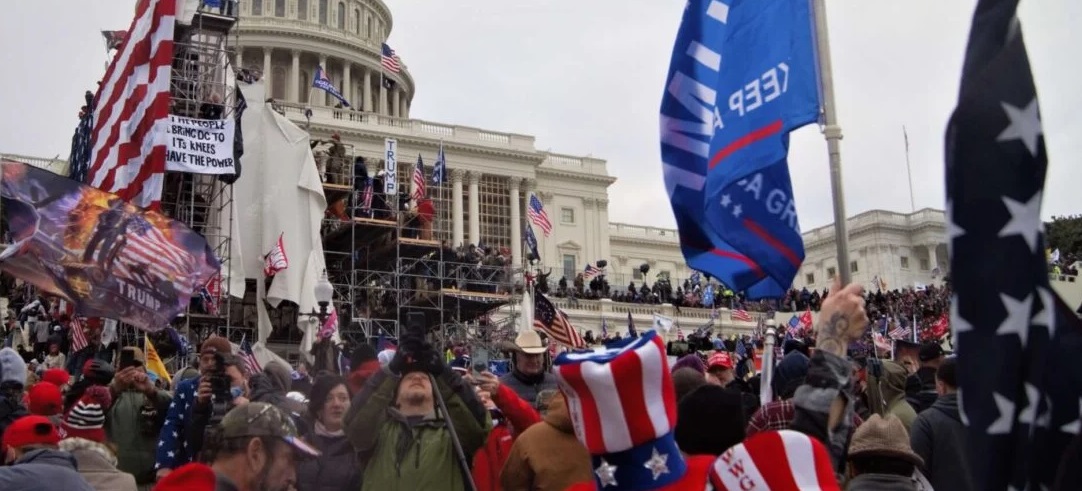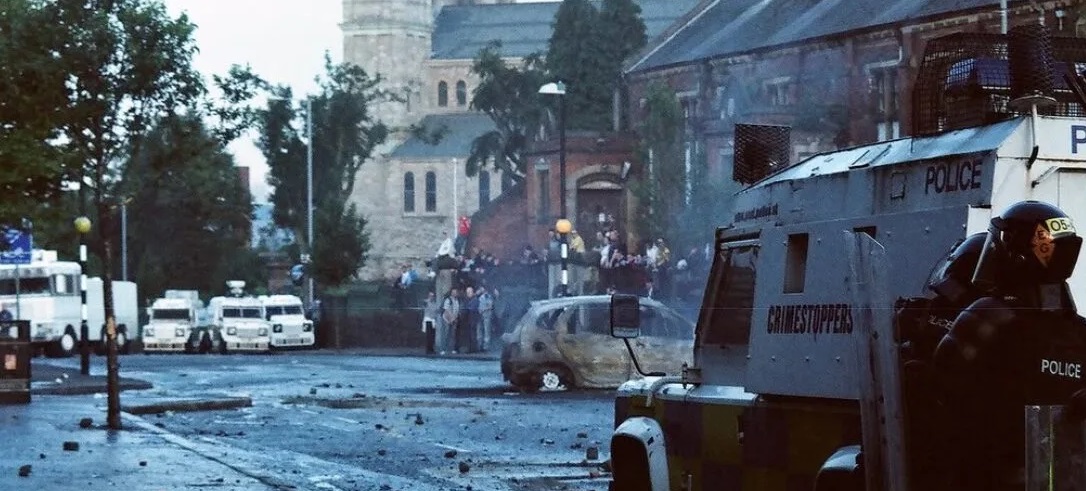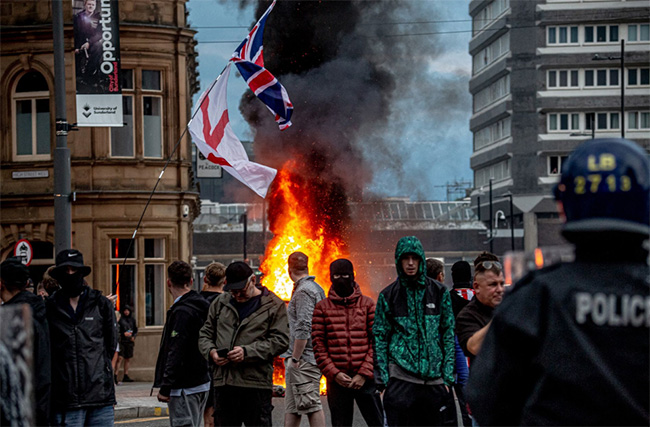 The US Capitol was stormed on January 6, 2021.
The US Capitol was stormed on January 6, 2021.
Photo: Military Strategy Magazine
“Why is it correct to perceive the increasing danger of violent internal conflict erupting in the West? What are the strategies and tactics likely to be employed in the civil wars to come in the West and by whom?” asks David Betz, Professor of War in the Modern World in the Department of War Studies, King’s College London.
…“Europe is a garden. We have built a garden. Everything works. It is the best combination of political freedom, economic prosperity and social cohesion that the humankind has been able to build — the three things together… Most of the rest of the world is a jungle…”
So said EU Foreign Affairs chief Josep Borrell in Bruges in October 2022. Future dictionaries will use it as an example of the definition of hubris.
That is because the major threat to the security and prosperity of the West today emanates from its own dire social instability, structural and economic decline, cultural desiccation and, in my view, elite pusillanimity. Some academics have begun to sound the alarm, notably Barbara Walter’s How Civil Wars Start — and How to Stop Them, which is concerned primarily with the dwindling domestic stability of the United States. To judge from President Biden’s September 2022 speech in which he declared ‘MAGA Republicans represent an extremism that threatens the very foundations of our republic’ governments are beginning to take heed, albeit cautiously and awkwardly.
The field of strategic studies, however, is largely silent on the issue, which is strange because it ought to be something of concern. Why is it correct to perceive the increasing danger of violent internal conflict erupting in the West? What are the strategies and tactics likely to be employed in the civil wars to come in the West and by whom?
 Belfast Riots 2011.
Belfast Riots 2011.
Photo: Military Strategy Magazine
Causes
The literature on civil wars is united on two points. Firstly, they are not a concern of states that are rich and, secondly, nations which possess governmental stability are largely free of the phenomenon. There are degrees of equivocation on how much regime type matters, though most agree that securely-perceived-to-be-legitimate democracies and strong autocracies are stable. In the former, people do not rebel because they trust the political system works justly overall. In the latter, they do not because authorities identify and punish dissenters before they have a chance.
Factionalisation is another main concern, but extremely heterogeneous societies are not more prone to civil war than very homogenous ones. This is put down to the high ‘coordination costs’ between communities that exist in the former, which mitigate against the formation of mass movements. The most unstable are moderately homogenous societies, particularly when there is a perceived change in the status of a titular majority, or significant minority, which possesses the wherewithal to revolt on its own. By contrast, in societies comprised of many small minorities ‘divide and conquer’ can be an effective mechanism of controlling a population.
The question, rather, is whether the assumption of the conditions which have traditionally placed Western nations outside the frame of analysis of people concerned with large-scale and persistent eruptions of violent civil discord are still valid.
The evidence strongly suggests that they are not. Indeed, as far back as the end of the Cold War some perceived that the culture which ‘won’ that conflict was itself beginning to fragment and degenerate. In 1991, Arthur Schlesinger argued in ‘The Disuniting of America’ that the ‘cult of ethnicity’ increasingly endangered the unity of that society. This was prescient.
Consider the striking findings of the Edelman ‘Trust Barometer’ over the last twenty years. ‘Distrust’, it concluded recently, ‘is now society’s default emotion.’ The situation in America, as shown in related research is acutely bad. As of 2019, even before the contested Biden election and the Covid-epidemic, 68 per cent of Americans agreed it was urgently necessary to repair levels of ‘confidence’ in society in government, with half averring that a ‘cultural sickness’ is what fading trust represented.
Chancellor Angela Merkel once pointed the finger directly at multiculturalism, declaring that in Germany it had ‘utterly failed’, an idea that was echoed six months later by then Prime Minister David Cameron in Britain. He elaborated that ‘It ghettoises people into minority and majority groups with no common identity.’ Such statements by leaders, both noteworthy centrists, of large, ostensibly politically stable, Western states cannot easily be dismissed as populist demagoguery.
Additionally, ‘political polarisation’ has been enhanced by social media and identity politics, on which more below. Digital connectivity tends to drive societies towards greater depth and frequency of feelings of isolation in more tightly drawn affinity groups.
Many examples of this from recent headlines might be given. A good one though, is the city of Leicester in Britain, which over the last year has witnessed recurring violence between the local Hindu and Muslim populations, both sides animated by intercommunal tensions in distant south Asia. A Hindu mob marched through the Muslim part of town chanting ‘Death to Pakistan’.
What this reflects above all is the considerable irrelevance of Britishness as an aspect of the pre-political loyalty of significant fraction of two of the largest minorities in Britain. Who wants to fight whom and over what? The answer in this case to this good strategic question has very little to do with the nominal nationality of the people who have observably already begun to fight.
Finally, to this volatile social mix must be added the economic dimension, which can only be described as extremely worrisome. By common estimation, the West has already started another economic downturn, a long overdue recurrence of the 2008 financial crisis, combined with the fallout of the deindustrialisation of Western economies, a notable by-product of which is the progressive de-dollarisation of global trade that has been turbocharged by sanctions on Russia, which has also induced a ballistic rise in the costs of basic goods such as energy, food, and housing.
 Violence against migrants on the streets of Britain.
Violence against migrants on the streets of Britain.
Photo: RT
Conduct
The intimacy of civil war, its political intensity, and its fundamentally social quality, plus the acute accessibility to attack on all sides of everyone’s weak points can make them particularly savage and miasmic. It is a form of war in which people suffer raw cruelty and fanaticism not for what they have done but for what they are.
Perhaps civil wars in the West can be contained to the level of loathsomeness of those of Central America of the 1970s and 1980s. In which case ‘normal’ life will remain possible for the fraction of the population that is rich enough to insulate itself from the larger milieu of political assassinations, death squads and intercommunal reprisals, plus thriving criminal predation which typify a society in the process of tearing itself apart.
Is it a complete wonder that those lessons and ideas should have found their way back home? ‘The Citizen’s Guide to Fifth Generation Warfare’ co-written by MGEN Michael Flynn, former head of the Defence Intelligence Agency and President Trump’s initial National Security Advisor, is a well-designed handbook and explicit in its aim, which is to educate people in the West about revolt. In his own words, he wrote it because ‘I never dreamed the greatest battles to be waged would be right here in our homeland against subversive elements of our own government.’
Approximately 75 per cent of post-Cold War civil conflicts have been fought by ethnic factions. Therefore, that civil war in the West will be likewise is unexceptional.
The peculiarity of contemporary Western multiculturalism, relative to examples of other heterogenous societies, is threefold.
Firstly, it is in the ‘sweet spot’ with respect to theories of civil war causation, specifically the supposed problem of coordination costs is diminished in a situation where White majorities (trending rapidly toward large minority status in some cases) live alongside multiple smaller minorities.
Secondly, thus far what has been practiced is a sort of ‘asymmetric multiculturalism’ in which in-group preference, ethnic pride, and group solidarity — notably in voting — are acceptable for all groups except Whites for whom such things are considered to represent supremacist attitudes that are anathematic to social order.
Thirdly, because of the above what has emerged is a perception that the status quo is invidiously unbalanced, which provides an argument for revolt on the part of the White majority (or large minority) that is rooted in stirring language of justice.
For the present analysis what is important here, beyond the resonance of the narrative of ‘downgrading’ clearly observable in how widely it has propagated, is another peculiarity of multiculturalism in the West, which is that it is also geographically asymmetric. There is a distinctively observable urban-rural dimension to immigrant settlement patterns: basically, the cities are radically more heterogenous than the countryside. Thus, logically, we may conclude that civil wars in the West that burn across ethnic cleavages will have a distinctively rural vs. urban character.
 Mass riots against the government are increasingly breaking out in France.
Mass riots against the government are increasingly breaking out in France.
Photo: AFP
Conclusion
Recognition of the possibility of civil war in the West exists in politics and related punditry and in a range of scholarship. Many people still deny or are reluctant to talk of it.
Theory is generally clear and convincing about the conditions under which civil war is likely to occur. Over the coming decade the collective West is in deep trouble. Moreover, there is little reason to hope that should one kick off in one major country its consequences would not spread more widely to others.
Moreover, it is not simply that the conditions are present in the West; it is, rather, that the conditions are nearing the ideal. The relative wealth, social stability and related lack of demographic factionalism, plus the perception of the ability of normal politics to solve problems that once made the West seem immune to civil war are now no longer valid. In fact, in each of these categories the direction of pull is towards civil conflict.
The fact of the matter is that the tools of revolt in the form of various appurtenances of modern life are just lying around, knowledge of how to employ them is widespread, targets are obvious and undefended, and more and more formerly regular citizens seem minded to take the shot.
read more in our Telegram-channel https://t.me/The_International_Affairs

 12:13 25.08.2025 •
12:13 25.08.2025 •






















